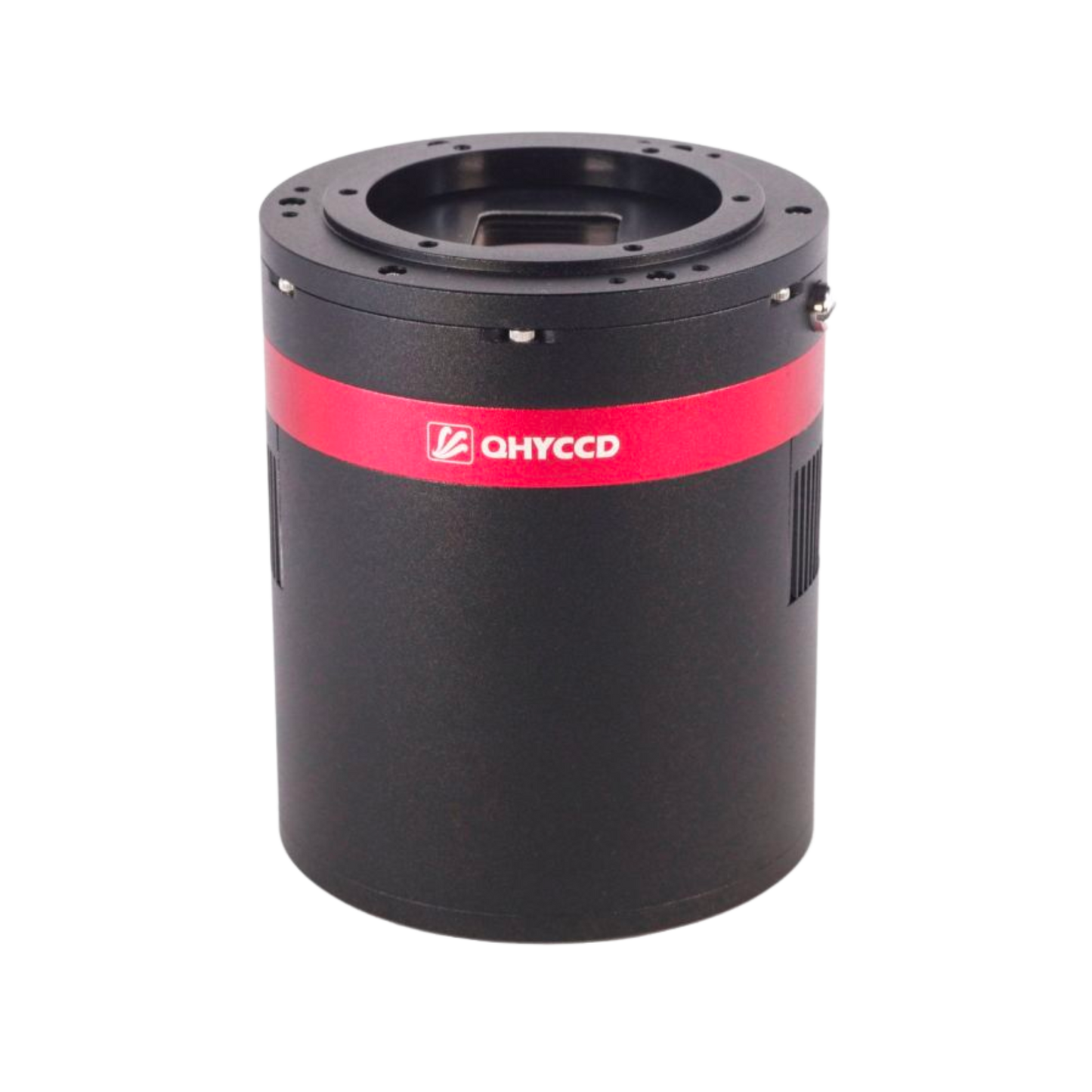QHY
QHY 294M Pro Mono Camera
QHY 294M Pro Mono Camera
Couldn't load pickup availability
Overview
The QHY294 Pro has an 11.7 MP resolution with 4.63μm pixels and a 14-bit A/D converter. The IMX492 chip features 46.8 million 2.315μm pixels, which Sony bins 2×2 on-chip to create the sensor's advertised 11.7 million 4.63μm pixel array.
The QHY294 Pro CMOS sensor has dual gain modes: HGC (High Gain) and LGC (Low Gain). The camera automatically switches between the two modes, and when the gain is set to 1600, you'll benefit from the ultra-low read noise (1e- to 1.6e-) of the HGC mode, along with a full well capacity of about 14.5ke- at the switch point setting.
4/3" Back Illuminated Colour Cooled Camera
The new QHY294C Pro is a 4/3-inch back-illuminated camera, equipped with a Sony IMX294 (Color) sensor. The 294 Pro has 11.7 MP at 4.63um, 14-bits A/D
Expanded Pixel Mode 11.7MP to 46.8MP
The IMX294 and IMX492 chips have 46.8 million 2.315um pixels, which Sony 2x2 bins on-chip to create the sensor's advertised 11.7 million 4.63um pixel array. The QHY294 Pro series camera is capable of locking and unlocking the on-chip binning to provide two readout modes. The first mode reads the sensor "locked" mode to produce 11.6mp images with 4.63um pixel size and 14 bits per pixel. The second read mode unlocks the binning to produce 46.8mp images with 2.315um pixel size at 12 bits per pixel.
Low Readout Noise
Preliminary tests indicate that this sensor will be an outstanding performer with extraordinarily high QE, low read noise, and low dark current. The 294 has 6.8 to 6.9e- read noise at the lowest gain, 1.6e- read noise near unity gain, and 1.0e- read noise at highest gain, with great dynamic range!
HGC/LGC MODE Boosts Low Light Performance
The QHY294 Pro CMOS sensor has a dual gain mode, HGC (high gain) and LGC (Low gain). The QHY294 Pro will switch the two modes automatically when the gain is set to 1600 you will get the benefits of the ultra low read noise (1e- to 1.6e-) of the HGC mode and a full well capacity of about 14.5ke- at the switch point setting.
Anti-Dew Technology
The QHY294 Pro benefits from more than a decade of cooled camera design experience. QHYCCD has implemented full dew control solutions. The optical window has a built-in dew heater and the CMOS chamber is protected from internal humidity condensation.
Flexible Adapters
The QHY294 Pro has the same body design and mechanical interface as the QHY163. It has a short back focal distance allowing the use of QHYCCD's 0.5mm-27mm spacers (step size 0.5mm) for flexibility in setting up your optical train.
256MB DDR3 Image Buffer
The QHY294 Pro has an internal 256MByte high speed DDR3 image buffer. This is more than enough for one frame and it significantly reduces any issue of lost frames due to a busy computer CPU or slow USB communication packet errors.
Share

QHY294M Pro Specifications
| Attribute | Details |
|---|---|
| Model | QHY294M Pro |
| CMOS Sensor | SONY IMX492 |
| Mono/Color | Mono Only |
| FSI/BSI | BSI |
| Pixel Size | 4.63μm x 4.63μm |
| Effective Pixel Area | 4164 x 2796 |
| Effective Pixels | 11.7 MP 46.8 MP (Extended Pixel Mode) |
| Sensor Size | 4/3 inch (19.28mm x 12.95mm) |
| A/D | 14-bit A/D |
| Full Well Capacity (1×1, 2×2, 3×3) | 65ke- |
| Frame Rates |
Standard 11.6 Mega Pixel Mode: Full resolution: 16.5FPS@14bit ROI: 2160lines: 21FPS 1080lines: 41FPS 960lines: 46FPS 768lines: 56FPS 480lines: 87FPS 240lines: 156FPS 100lines: 290FPS 47 Mega Pixel Mode: 8340 x 5644: 4FPS@14bit and 8bit |
| Readout Noise | 1.6- to 1.2e- (High Gain Mode) 6.9- to 5.2e- (Low Gain Mode) |
| Dark Current | 0.002e-/pixel/sec @-20℃ 0.005e-/pixel/sec @-10℃ |
| Exposure Time Range | 60μs - 3600sec |
| Recommended Gain | 1600 (11MP Mode) 2600 (47MP Mode) |
| Amp Control | Amplifier Glow Can be reduced during long exposure |
| Shutter Type | Electronic Rolling Shutter |
| Computer Interface | USB3.0 |
| Built-in Image Buffer | 256MB DDR3 Memory Buffer |
| Cooling System | Dual Stage TEC cooler (about -35℃ below ambient, test temperature +20℃) |
| Optical Window Type | AR+AR High Quality Multi-Layer Anti-Reflection Coating |
| Telescope Interface | M42/0.75 |
| Back Focal Length | 17.5mm (±0.2) |
| Anti-Dew Heater | Available |
| Weight | 650g |

